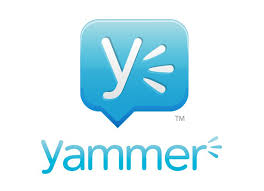Those of you who are followers of learning technology will probably have heard of Jane Hart of Top 100 tools fame. A few of us within the SALT Team follow her blogs and tweets and given that we are looking to improve on our CPD provision, a recent workshop that she ran, “Modernising Classroom Training with Technology” was of particular interest to the team. I participated in this four week, asynchronous, online workshop with a view to looking at how it was delivered, and whether it was an approach that we might consider as one of the options for delivery in the future.
I could tell you the title and I could tell you that it was a four week course. Its outline is not available online anymore so I’m unable to link to it, but it was intriguing. I couldn’t wait to get started, though having never participated in an asynchronous online course before, I wasn’t sure how it would go.
So, what did the course involve?
When my registration was processed and I received my login details, I was directed to yammer, which was the platform that was being used for the duration of the course. There was a pre-course activity, followed by 10 activities spread over four weeks. Activities 1 and 2 were released during week 1, 3-5 in week 2 and 6-10 during week three. That said, it was an asynchronous course so there was no requirement to be online for particular periods of time or for a specific length of time. One thing that was mentioned in the welcome email was “the more you put in, the more you get out of it”. This was true. I engaged as much as I could with the course (there were a couple of activities that I wasn’t able to complete), and I feel that I made a positive contribution to the course.
I have blogged about each week post-workshop on my personal blog, and have linked them below (on the week) if you want to read further. If you have any questions about any of the tools used within the workshop, or even about the concept of asynchronous online learning then please feel free to contact me.
Week 1:
Getting Ready
Activity 1: Using mobile devices in icebreakers
Activity 2: Using QR Codes
Week 2:
Activity 3: Using mobile devices for notetaking
Activity 4: Digitally annotating training materials
Activity 5: Interactive training materials
Weeks 3&4:
Activity 6: Quizzing, polling & feedback
Activity 7: Synchronised & on-demand presentations
(Undertaken during week 4)
Activity 8: Backchannels
Activity 9: Brainstorming
Activity 10: Collaborative Writing
Reflections
On the whole, I really really enjoyed the experience. I felt that the concept of the asynchronous course was really good, as was the content. From a CPD Perspective, I liked the fact that the activities were released each week and that there was no time limit to complete them. Great for when work gets in the way. That said, there appeared to be only a small group of participants, and I felt that I would have benefitted more from more people engaging. The course will be left open for a couple of months, so there may well be more activity later on, but I’m not sure.
Yammer is not the easiest platform to navigate, even for the tech savvy. Think of yammer as a cross between discussion boards and your Facebook newsfeed. Any threads that get posted are in chronological order (as is the case with a discussion board or forum). However, when someone comments on a thread then that thread goes to the top (a la Facebook). Taking into account that it is an asynchronous course, and therefore people won’t necessarily be watching it on a daily basis, it is easy to get lost in the myriad of postings. Thankfully, Jane was able to organise the layout with a site map stored as a note so it was easy to go to the activities if you knew which one you wanted to go to.
Would this benefit SALT?
I think this approach is well worth trialling. I can see two areas in which it can be used, though there are probably others. Both options relate to TEL and CPD. Option 1 would involve designing a similar course with a view to exploring the core tools supported by the team. The second option would be to run a course of a similar vein to the workshop I’ve attended but with themed tools and apps (for example, centred around assessment and feedback, or tools for large groups). I guess I would need to think on this a bit more but there’s certainly scope.
As mentioned earlier in this post, please feel free to contact me if you would like any further information on any of the tools, or the workshop.



